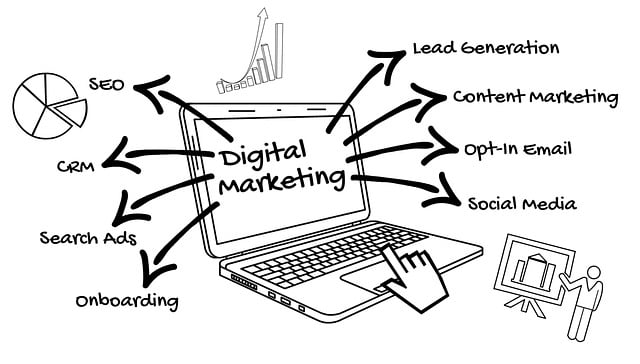Truck repair shops face challenges from complex vehicles and high operator expectations. AI coaching systems, leveraging diagnostics, predictive maintenance, and automated workflows, enhance efficiency. These tools analyze data, reduce human error, optimize inventory, and streamline processes, leading to faster repairs, lower costs, and improved customer satisfaction. Implementing AI requires assessing current processes, choosing suitable technologies, training staff, testing, and monitoring performance metrics to maximize benefits.
In the dynamic landscape of trucking, maintaining optimal vehicle condition is paramount. However, traditional truck repair shops often grapple with inefficiencies stemming from manual diagnostics and labor-intensive tasks. This article explores the transformative potential of Artificial Intelligence (AI) tools in revolutionizing truck repair. We delve into specific areas where AI integration can streamline operations, enhance accuracy, and ultimately improve efficiency through AI coaching strategies.
- Understanding the Challenges of Truck Repair: Identifying Areas for AI Integration
- The Role of AI Coaching in Enhancing Efficiency: Strategies and Benefits
- Implementing AI Tools: A Step-by-Step Guide for Truck Repair Shops
Understanding the Challenges of Truck Repair: Identifying Areas for AI Integration

Truck repair shops face unique challenges due to the complex and demanding nature of commercial vehicles. The process often involves diagnosing intricate mechanical issues, managing diverse parts and equipment, and ensuring timely repairs to minimize downtime, which is critical for fleet operators’ bottom lines. With a vast array of components and constant technological advancements, keeping up with repairs can be overwhelming.
AI offers a promising solution to enhance efficiency in these shops. By implementing AI coaching systems, repair technicians can benefit from advanced diagnostics, predictive maintenance, and streamlined workflows. These tools can analyze historical data, identify patterns, and provide insights into potential failures, enabling proactive measures. AI integration can also automate certain tasks, reduce human error, and optimize inventory management, ultimately improving the overall repair process.
The Role of AI Coaching in Enhancing Efficiency: Strategies and Benefits

Artificial Intelligence (AI) coaching is transforming the way truck repair shops operate, significantly enhancing their overall efficiency. By leveraging machine learning algorithms and natural language processing, AI coaches can provide real-time guidance to mechanics during repairs. These virtual assistants offer step-by-step instructions, access to vast databases of troubleshooting information, and even predict potential issues based on vehicle history and sensor data. This not only reduces the time spent on diagnostics but also minimizes errors, ensuring faster and more accurate truck repairs.
The strategies employed by AI coaching systems include personalized learning paths tailored to each mechanic’s skill level, automated updates on new repair techniques and technologies, and continuous performance monitoring. Benefits are manifold: improved productivity, reduced labor costs, enhanced customer satisfaction due to quicker turnaround times, and increased safety as AI can alert mechanics to potential hazards or complex procedures. With AI coaching, truck repair shops can streamline their processes, stay competitive in the market, and deliver exceptional service.
Implementing AI Tools: A Step-by-Step Guide for Truck Repair Shops

Implementing AI tools can significantly transform a truck repair shop’s operations, enhancing efficiency and accuracy. Here’s a step-by-step guide for shops looking to integrate AI coaching into their workflow:
1. Assess Current Processes: Begin by evaluating your existing repair processes, identifying bottlenecks, and understanding the areas where AI could provide the most value. Consider tasks like diagnostic analysis, parts identification, and common repair patterns that can benefit from automated solutions.
2. Choose the Right AI Tools: Select AI technologies tailored to your specific needs. For truck repair shops, this might include computer-aided design (CAD) software for detailed repairs, machine learning algorithms for predictive maintenance, or natural language processing (NLP) chatbots to offer initial diagnostic support to customers. Ensure these tools align with your budget and future goals.
3. Integrate AI into Training: Implement AI coaching mechanisms to train staff on new technologies. This step is crucial for a smooth transition as employees learn to work alongside AI systems, ensuring they can leverage the technology effectively without becoming overwhelmed. Provide hands-on training sessions and offer ongoing support.
4. Test and Optimise: Once implemented, thoroughly test each AI tool in real-world scenarios. Monitor their performance, collect feedback from technicians, and make adjustments as needed. Regularly update algorithms to improve accuracy and adapt to changing vehicle models and repair trends.
5. Monitor Performance Metrics: Continuously track key performance indicators (KPIs) to measure the impact of AI on your shop’s efficiency. This could include reduced repair times, improved diagnostic accuracy, and increased customer satisfaction due to faster service.
AI tools have the potential to revolutionize truck repair shops by significantly enhancing efficiency. By implementing AI coaching strategies, these businesses can streamline operations, reduce costs, and improve overall productivity. Through a structured integration process, as outlined in this article, truck repair shops can leverage AI technologies to stay competitive in today’s market. The benefits are clear: faster turnaround times, reduced labor costs, and improved accuracy. Embracing AI coaching for truck repair is not just a step towards the future; it’s a game-changer that ensures these workshops remain efficient and profitable.
